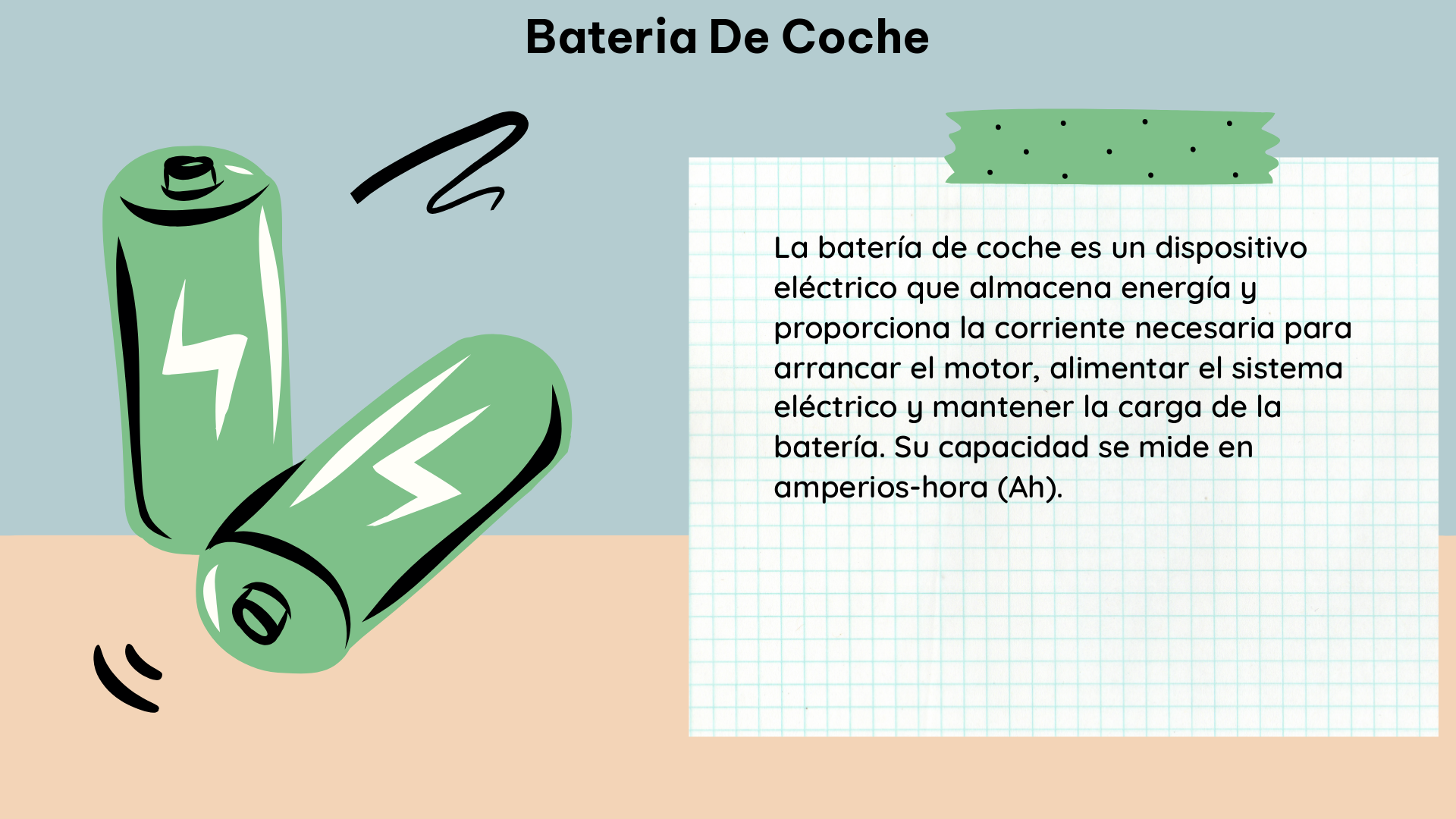Bateria de coche, or car battery, is a vital component of any vehicle, providing the necessary power to start the engine and run various electrical systems. The technical specifications of a car battery include its cold cranking amps (CCA), which measures the battery’s ability to start an engine in cold temperatures, and its reserve capacity (RC), which indicates how long the battery can support the electrical load of the vehicle when the engine is off.
Technical Specifications of Bateria de Coche
Cold Cranking Amps (CCA)
The Cold Cranking Amps (CCA) is a crucial specification that measures a battery’s ability to start an engine in cold temperatures. The CCA rating represents the number of amps a 12-volt battery can deliver for 30 seconds while maintaining a voltage of at least 7.2 volts at 0°F (-18°C). A higher CCA rating indicates a battery’s superior performance in cold weather conditions, making it essential for vehicles in colder climates.
For example, a typical car battery may have a CCA rating of 650-800 amps, while a heavy-duty truck battery may have a CCA rating of 900-1,000 amps or more. The CCA rating is particularly important for vehicles that are frequently used in cold weather, such as those in northern regions or areas with harsh winters.
Reserve Capacity (RC)
The Reserve Capacity (RC) of a car battery is a measure of how long the battery can support the electrical load of the vehicle when the engine is off. This is particularly important for vehicles with high electrical demands, such as those with extensive audio systems, multiple electronic accessories, or prolonged periods of engine idling.
The RC is typically measured in minutes and represents the time the battery can maintain a voltage of 10.5 volts or higher while powering the vehicle’s electrical systems. A higher RC rating indicates a battery’s ability to provide longer-lasting power when the engine is not running.
For example, a typical car battery may have an RC rating of 90-120 minutes, while a deep-cycle marine battery designed for boats may have an RC rating of 180-240 minutes or more.
Group Size
The group size of a car battery refers to its physical dimensions and terminal configuration, ensuring a correct fit and connection to the vehicle’s electrical system. The group size is typically denoted by a number and letter combination, such as 24F or 35H, which corresponds to the battery’s length, width, height, and terminal placement.
It is essential to select a battery with the correct group size for your vehicle to ensure a proper fit in the battery tray and secure connection to the car’s electrical system. Using the wrong group size can lead to compatibility issues and potential damage to the vehicle’s electrical components.
Capacity
The capacity of a car battery is measured in ampere-hours (Ah) and indicates the amount of electrical charge the battery can store. A higher capacity battery can provide more power for a more extended period, making it ideal for vehicles with high electrical loads, such as those with many electronic devices or accessories.
For example, a typical car battery may have a capacity of 45-80 Ah, while a deep-cycle marine battery designed for boats may have a capacity of 100-200 Ah or more.
Bateria de Coche DIY

If you’re interested in a DIY approach to car battery maintenance, here are some steps you can follow:
- Clean the battery terminals: Use a wire brush and a solution of baking soda and water to clean any corrosion from the battery terminals. Rinse with water and dry thoroughly.
- Check the battery water level: If your battery is not maintenance-free, check the water level and add distilled water if necessary.
- Tighten the battery terminals: Ensure that the battery terminals are securely fastened to the battery posts.
- Check the battery cables: Inspect the battery cables for any signs of wear or damage, and replace them if necessary.
- Secure the battery: Make sure the battery is securely mounted in the battery tray and cannot move around.
- Test the battery: Use a multimeter or a battery tester to check the battery’s voltage and state of charge.
By following these steps, you can help ensure that your car battery is in good working order and can provide reliable starting power for your vehicle.
References
- “Car Battery Basics.” Battery Council International, https://www.batterycouncil.org/car-battery-basics/.
- “How to Choose a Car Battery.” Consumer Reports, https://www.consumerreports.org/car-batteries/how-to-choose-a-car-battery/.
- “How to Maintain Your Car Battery.” Edmunds, https://www.edmunds.com/car-maintenance/how-to-maintain-your-car-battery.html.
- “Understanding Car Battery Specifications.” Batteries Plus Bulbs, https://www.batteriesplus.com/blog/car-care/understanding-car-battery-specifications.
- “What is the Difference Between CCA and RC in Car Batteries?” Advance Auto Parts, https://shop.advanceautoparts.com/r/advice/car-maintenance/what-is-the-difference-between-cca-and-rc-in-car-batteries.

The lambdageeks.com Core SME Team is a group of experienced subject matter experts from diverse scientific and technical fields including Physics, Chemistry, Technology,Electronics & Electrical Engineering, Automotive, Mechanical Engineering. Our team collaborates to create high-quality, well-researched articles on a wide range of science and technology topics for the lambdageeks.com website.
All Our Senior SME are having more than 7 Years of experience in the respective fields . They are either Working Industry Professionals or assocaited With different Universities. Refer Our Authors Page to get to know About our Core SMEs.